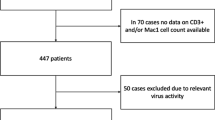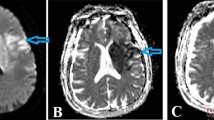Abstract
Enhanced systemic inflammatory activity (SIA) during myocardial infarction (MI) and the extent of the peri-infarct zone characterized by cardiac magnetic resonance imaging (CMRi) are both associated with increased risk of life-threatening arrhythmias and sudden cardiac death. The present study investigated the existence of association between these two phenomena in 98 patients (55 ± 10 years) with ST segment elevation MI. Plasma levels of C-reactive protein (CRP), interleukin-2 (IL-2), and tumor necrosis factor (TNF) were measured on admission (D1) and on the fifth day post-MI (D5). CMRi was performed 2 weeks after MI to quantify peri-infarct zone (PIZ). Between D1 and D5, the increase in CRP (6.0 vs. 5.6 times; p = 0.02), IL-2 (3.6 vs. 3.4 times; p = 0.04) and tumor necrosis factor type α (TNF-α; 4.6 vs. 3.9 times; p = 0.001) were higher in patients with PIZ above the median than in the counterparts. PIZ was correlated with CRP-D5 (r = 0.69), delta-CRP (r = 0.7), IL-2-D5 (r = 0.5), delta-IL-2 (r = 0.6), TNF-α (r = 0.5), delta-TNF-α (r = 0.4; p = 0.0001). Enhanced activation of SIA during the acute phase of MI is directly related with generation of PIZ.


Similar content being viewed by others
References
Frangogiannis, N.G., C.W. Smith, and M.L. Entman. 2002. The inflammatory response in myocardial infarction. Cardiovascular Research 53(1): 31–47.
Elmas, E., T. Popp, S. Lang, C.E. Dempfle, T. Kalsch, and M. Borggrefe. 2010. Sudden death: do cytokines and prothrombotic peptides contribute to the occurrence of ventricular fibrillation during acute myocardial infarction? International Journal of Cardiology 145(1): 118–119.
Pietila, K.O., A.P. Harmoinen, J. Jokiniitty, and A.I. Pasternack. 1996. Serum C-reactive protein concentration in acute myocardial infarction and its relationship to mortality during 24 months of follow-up in patients under thrombolytic treatment. European Heart Journal 17(9): 1345–1349.
Nian, M., P. Lee, N. Khaper, and P. Liu. 2004. Inflammatory cytokines and postmyocardial infarction remodeling. Circulation Research 94(12): 1543–1553.
Saraste, A., K. Pulkki, M. Kallajoki, K. Henriksen, M. Parvinen, and L.M. Voipio-Pulkki. 1997. Apoptosis in human acute myocardial infarction. Circulation 95(2): 320–323.
Deneke, T., K.M. Muller, B. Lemke, T. Lawo, B. Calcum, M. Helwing, A. Mugge, and P.H. Grewe. 2005. Human histopathology of electroanatomic mapping after cooled-tip radiofrequency ablation to treat ventricular tachycardia in remote myocardial infarction. Journal of Cardiovascular Electrophysiology 16(11): 1246–1251.
Schmidt, A., C.F. Azevedo, A. Cheng, S.N. Gupta, D.A. Bluemke, T.K. Foo, G. Gerstenblith, R.G. Weiss, E. Marban, G.F. Tomaselli, J.A. Lima, and K.C. Wu. 2007. Infarct tissue heterogeneity by magnetic resonance imaging identifies enhanced cardiac arrhythmia susceptibility in patients with left ventricular dysfunction. Circulation 115(15): 2006–2014.
Yan, A.T., A.J. Shayne, K.A. Brown, S.N. Gupta, C.W. Chan, T.M. Luu, M.F. Di Carli, H.G. Reynolds, W.G. Stevenson, and R.Y. Kwong. 2006. Characterization of the peri-infarct zone by contrast-enhanced cardiac magnetic resonance imaging is a powerful predictor of post-myocardial infarction mortality. Circulation 114(1): 32–39.
Simonetti, O.P., R.J. Kim, D.S. Fieno, H.B. Hillenbrand, E. Wu, J.M. Bundy, J.P. Finn, and R.M. Judd. 2001. An improved MR imaging technique for the visualization of myocardial infarction. Radiology 218(1): 215–223.
Salton, C.J., M.L. Chuang, C.J. O’Donnell, M.J. Kupka, M.G. Larson, K.V. Kissinger, R.R. Edelman, D. Levy, and W.J. Manning. 2002. Gender differences and normal left ventricular anatomy in an adult population free of hypertension. A cardiovascular magnetic resonance study of the Framingham Heart Study Offspring cohort. Journal of the American College of Cardiology 39(6): 1055–1060.
Alfakih, K., S. Reid, T. Jones, and M. Sivananthan. 2004. Assessment of ventricular function and mass by cardiac magnetic resonance imaging. European Radiology 14(10): 1813–1822.
Amado, L.C., B.L. Gerber, S.N. Gupta, D.W. Rettmann, G. Szarf, R. Schock, K. Nasir, D.L. Kraitchman, and J.A.C. Lima. 2004. Accurate and objective infarct sizing by contrast-enhanced magnetic resonance imaging in a canine myocardial infarction model. Journal of the American College of Cardiology 44(12): 2383–2389.
Suleiman, M., D. Aronson, S.A. Reisner, M.R. Kapeliovich, W. Markiewicz, Y. Levy, and H. Hammerman. 2003. Admission C-reactive protein levels and 30-day mortality in patients with acute myocardial infarction. American Journal of Medicine 115(9): 695–701.
Abbate, A., F.N. Salloum, E. Vecile, A. Das, N.N. Hoke, S. Straino, G.G. Biondi-Zoccai, J.E. Houser, I.Z. Qureshi, E.D. Ownby, E. Gustini, L.M. Biasucci, A. Severino, M.C. Capogrossi, G.W. Vetrovec, F. Crea, A. Baldi, R.C. Kukreja, and A. Dobrina. 2008. Anakinra, a recombinant human interleukin-1 receptor antagonist, inhibits apoptosis in experimental acute myocardial infarction. Circulation 117(20): 2670–2683.
Hori, M., and K. Nishida. 2009. Oxidative stress and left ventricular remodelling after myocardial infarction. Cardiovascular Research 81(3): 457–464.
Agosto, M., M. Azrin, K. Singh, A.S. Jaffe, and B.T. Liang. 2011. Serum caspase-3 p17 fragment is elevated in patients with ST-segment elevation myocardial infarction: a novel observation. Journal of the American College of Cardiology 57(2): 220–221.
Condorelli, G., R. Roncarati, J. Ross Jr., A. Pisani, G. Stassi, M. Todaro, S. Trocha, A. Drusco, Y. Gu, M.A. Russo, G. Frati, S.P. Jones, D.J. Lefer, C. Napoli, and C.M. Croce. 2001. Heart-targeted overexpression of caspase3 in mice increases infarct size and depresses cardiac function. Proceedings of the National Academy of Sciences of the United States of America 98(17): 9977–9982.
Chen, Y., B. Pat, J. Zheng, L. Cain, P. Powell, K. Shi, A. Sabri, A. Husain, and L.J. Dell’italia. 2010. Tumor necrosis factor-alpha produced in cardiomyocytes mediates a predominant myocardial inflammatory response to stretch in early volume overload. Journal of Molecular and Cellular Cardiology 49(1): 70–78.
Schuleri, K.H., M. Centola, R.T. George, L.C. Amado, K.S. Evers, K. Kitagawa, A.L. Vavere, R. Evers, J.M. Hare, C. Cox, E.R. McVeigh, J.A. Lima, and A.C. Lardo. 2009. Characterization of peri-infarct zone heterogeneity by contrast-enhanced multidetector computed tomography: a comparison with magnetic resonance imaging. Journal of the American College of Cardiology 53(18): 1699–1707.
Schuleri, K.H., M. Centola, K.S. Evers, A. Zviman, R. Evers, J.A. Lima, and A.C. Lardo. 2012. Cardiovascular magnetic resonance characterization of peri-infarct zone remodeling following myocardial infarction. Journal of Cardiovascular Magnetic Resonance 14: 24.
Acknowledgments
Prof. Sposito was supported by a fellowship grant of productivity in research from the Brazilian National Research Council (CNPq), grant number 300313/2007-1. Dr. Coelho-Filho is a recipient of an AHA Postdoctoral Fellowship Award (AHA 11POST5550053). ACS, ORCF, JCQS, TQ, RM, BA, JMA, ALRA, JAFR, and ORC take responsibility for all aspects of the reliability and freedom from bias of the data presented and their discussed interpretation. RJG collaborated in image processing to estimate the PIZ. MJH collaborated critically reviewing the manuscript. The authors state that they have no conflict of interest.
Author information
Authors and Affiliations
Consortia
Corresponding author
Rights and permissions
About this article
Cite this article
Quinaglia e Silva, J.C., Coelho-Filho, O.R., Andrade, J.M. et al. Peri-Infarct Zone Characterized by Cardiac Magnetic Resonance Imaging is Directly Associated with the Inflammatory Activity During Acute Phase Myocardial Infarction. Inflammation 37, 678–685 (2014). https://doi.org/10.1007/s10753-013-9784-y
Published:
Issue Date:
DOI: https://doi.org/10.1007/s10753-013-9784-y




